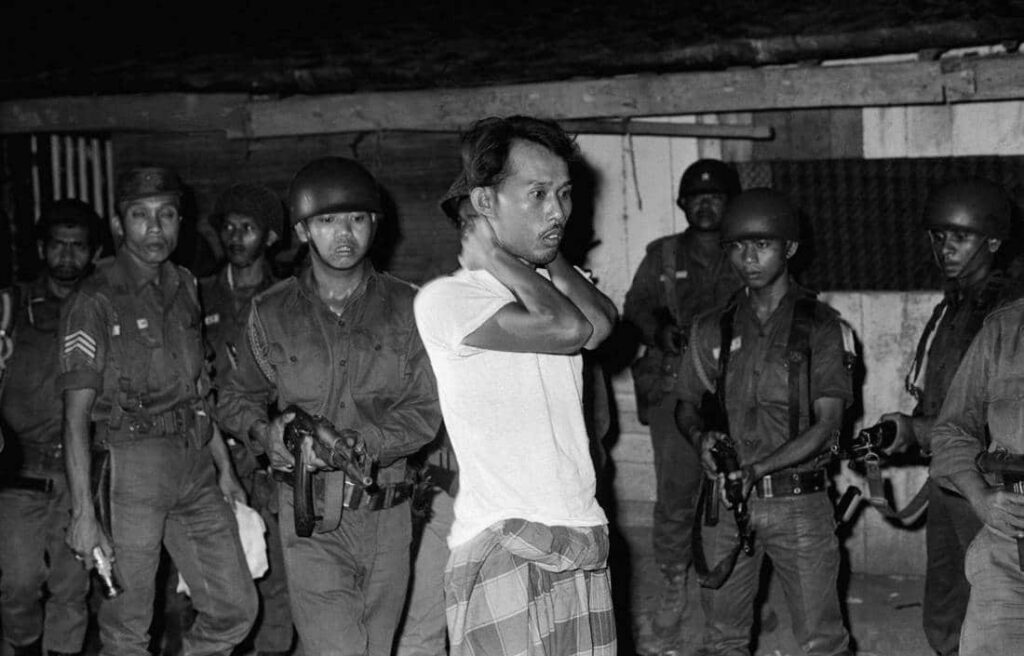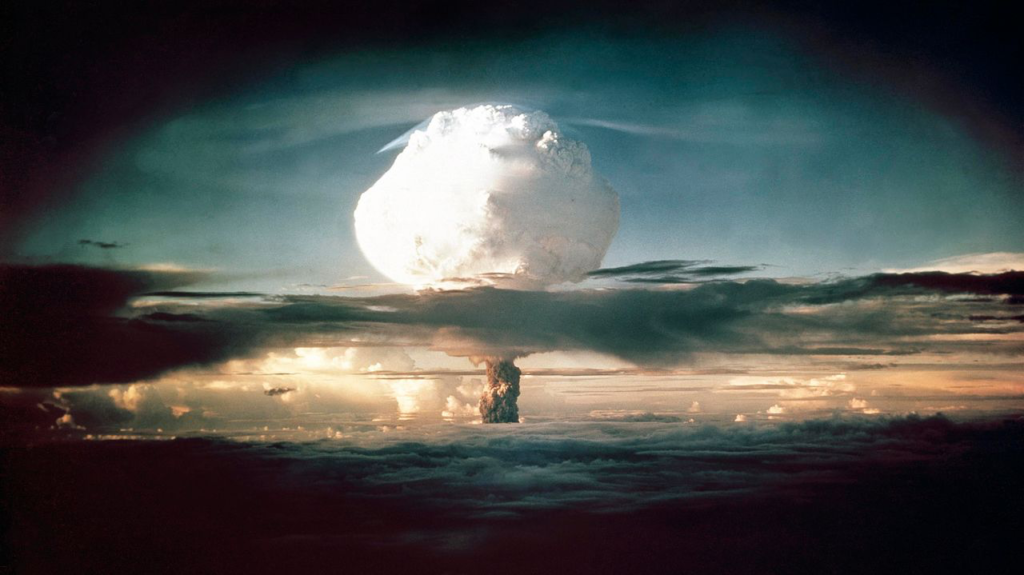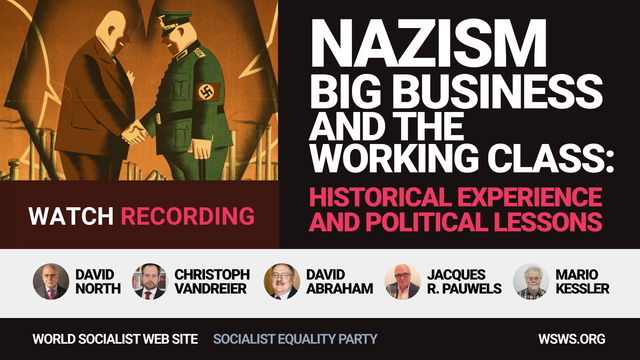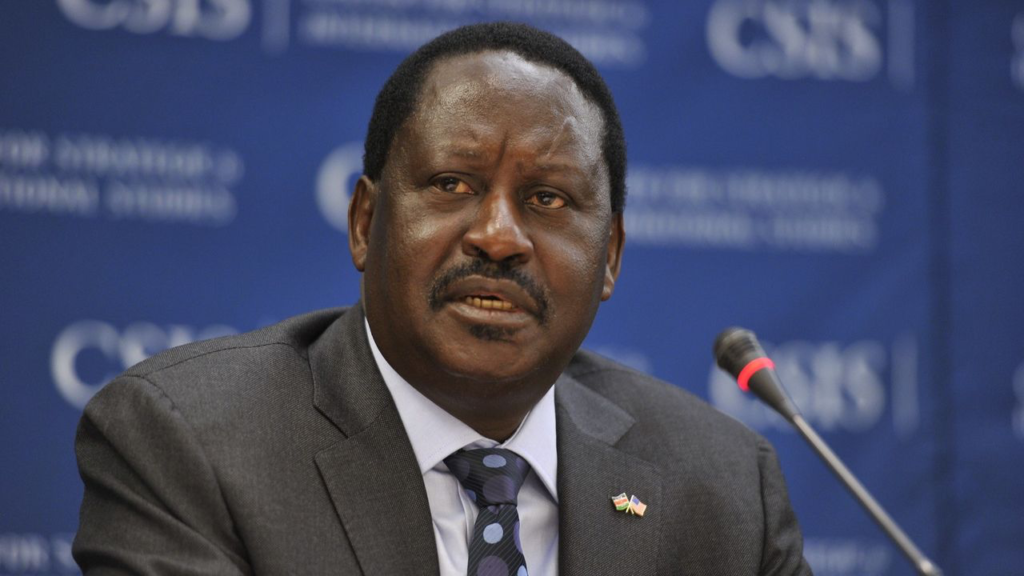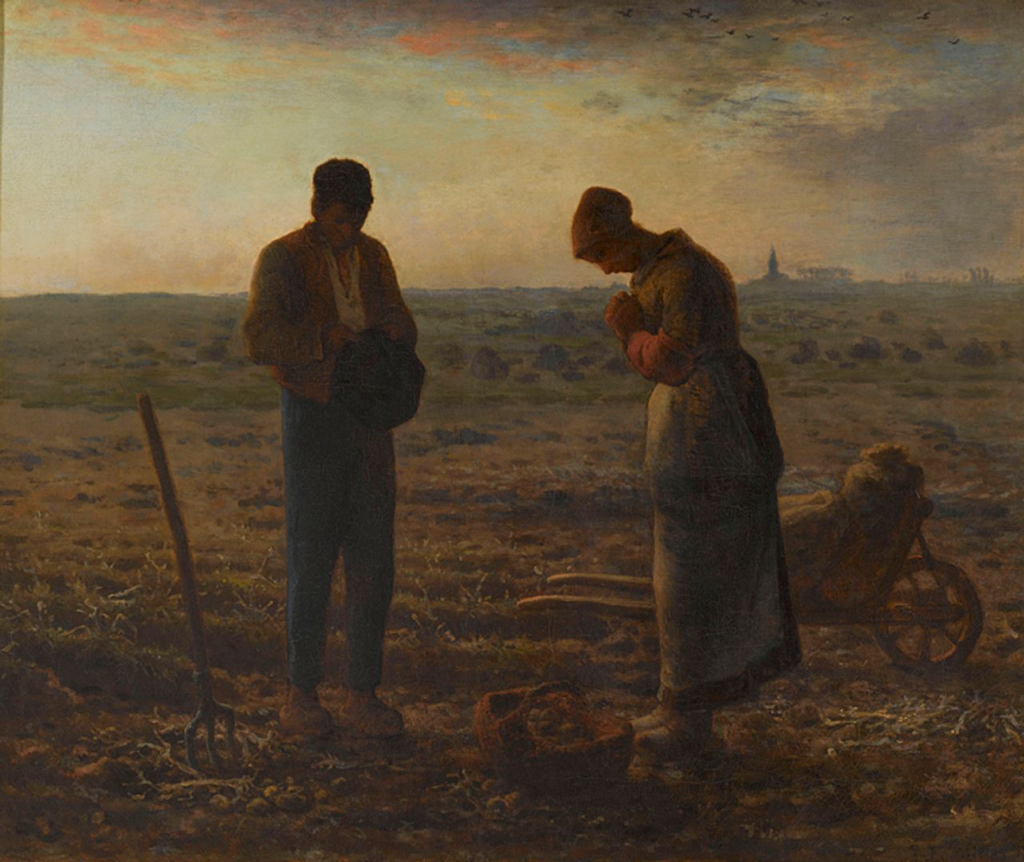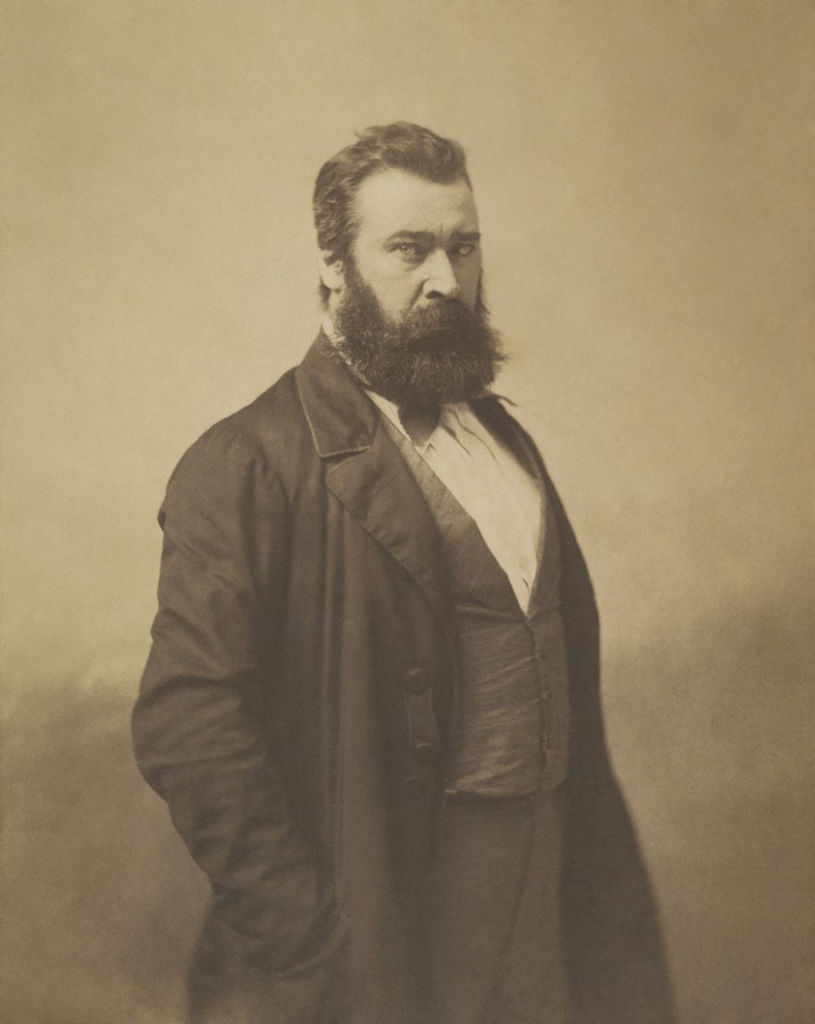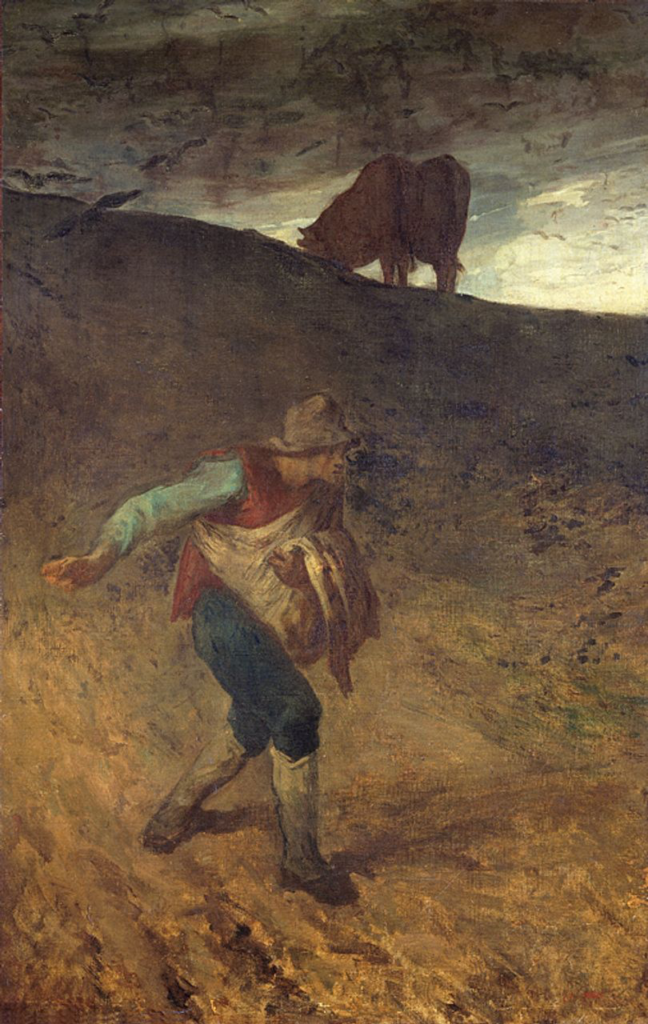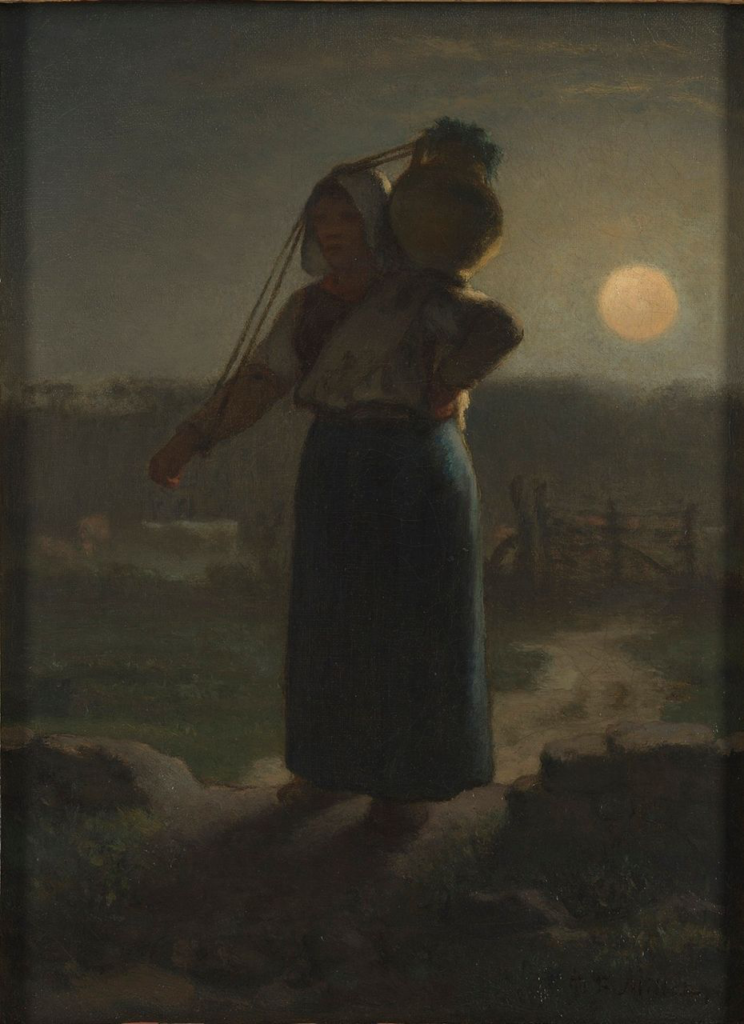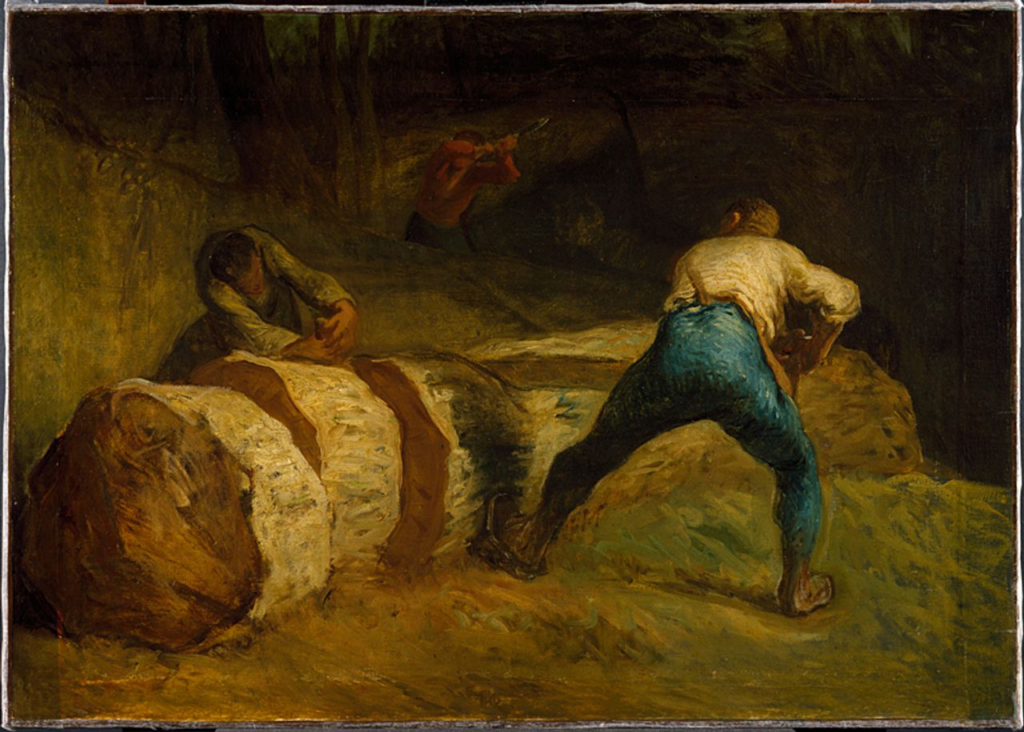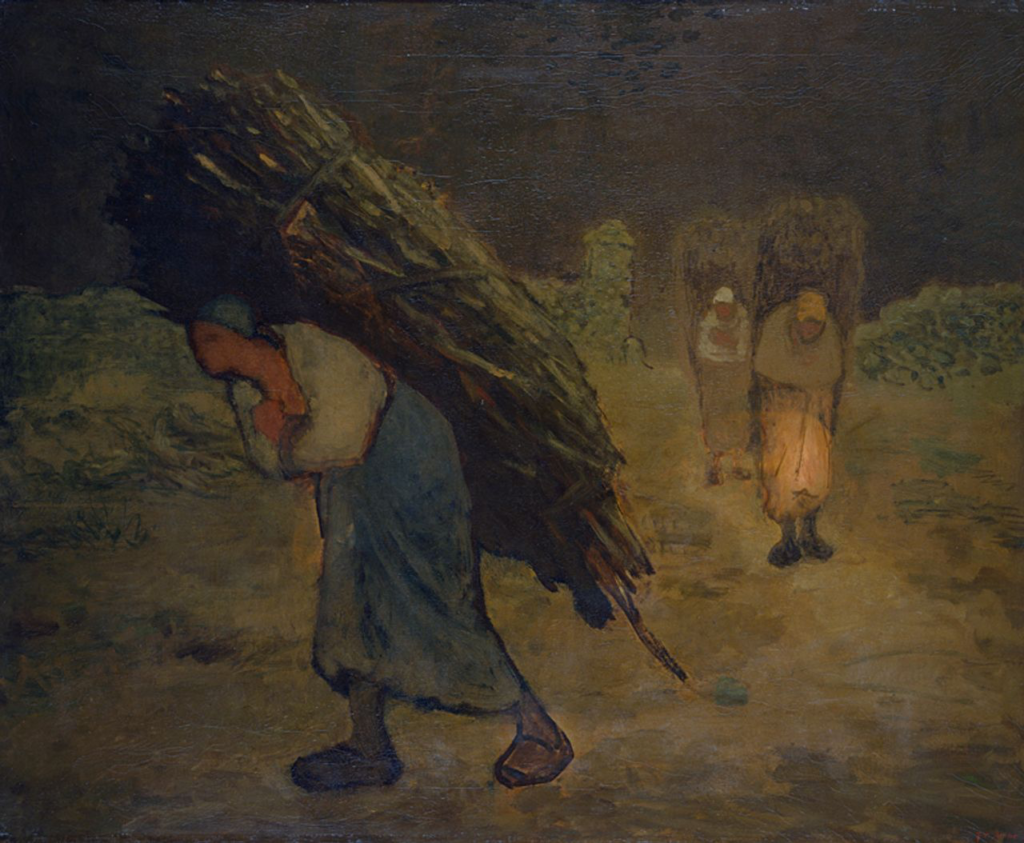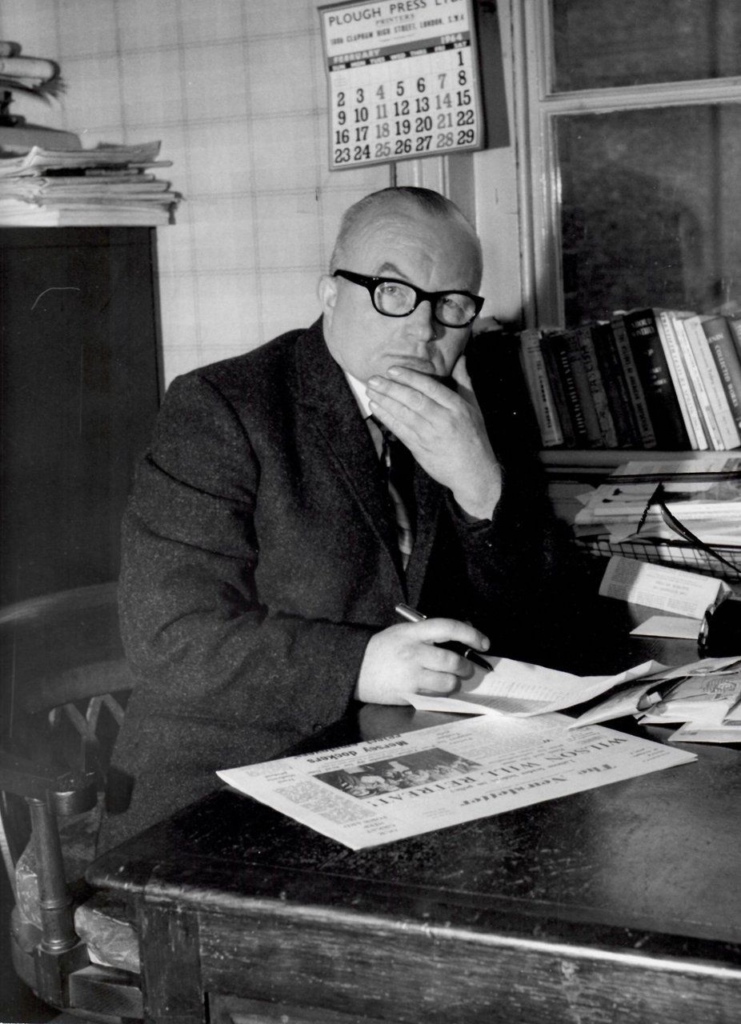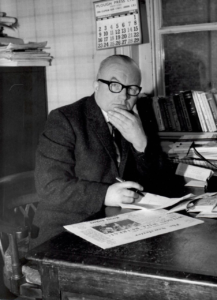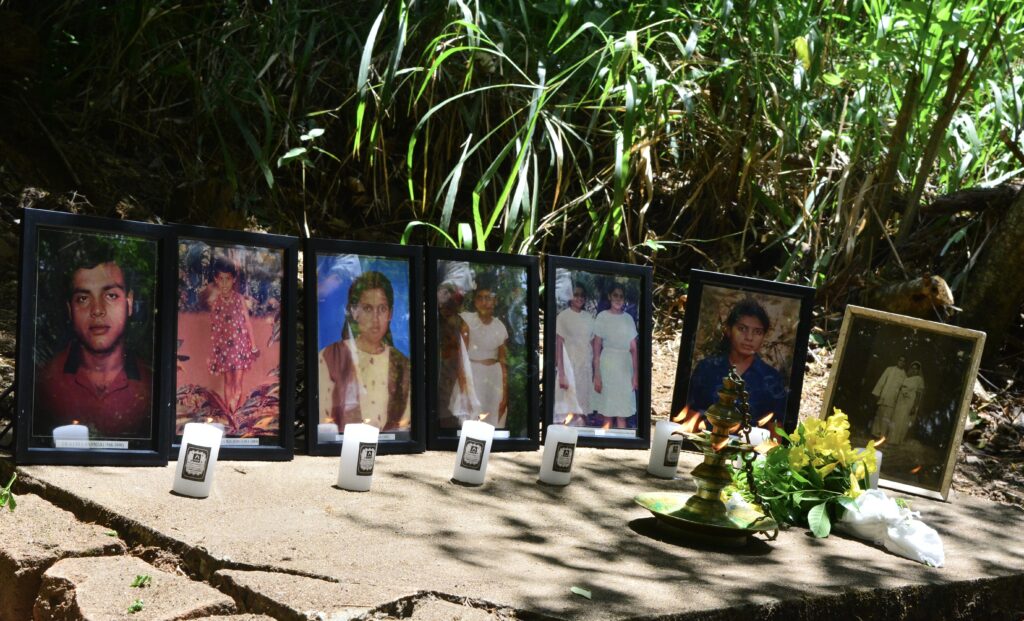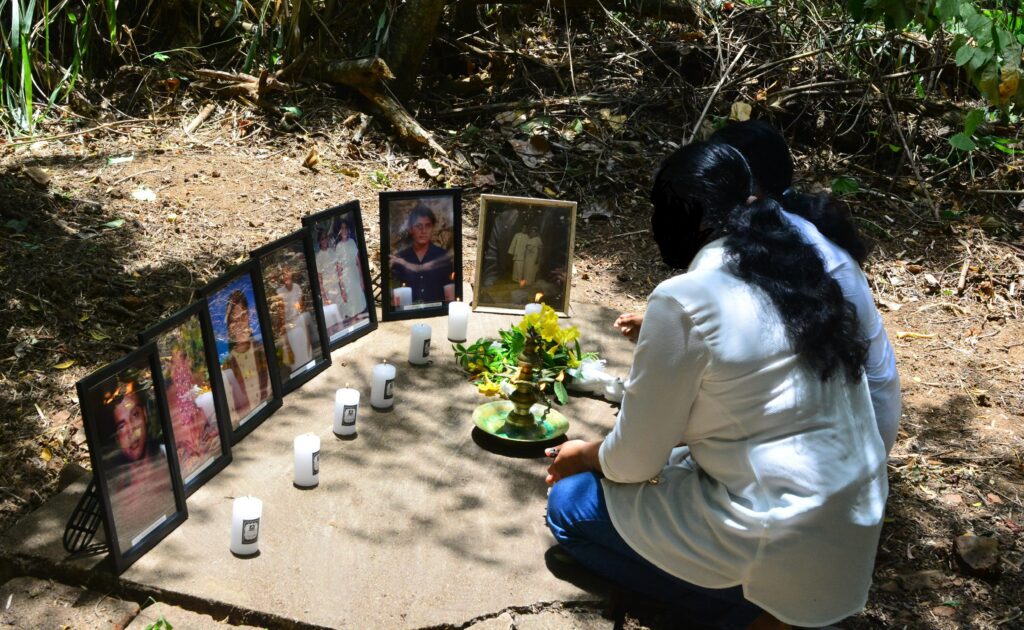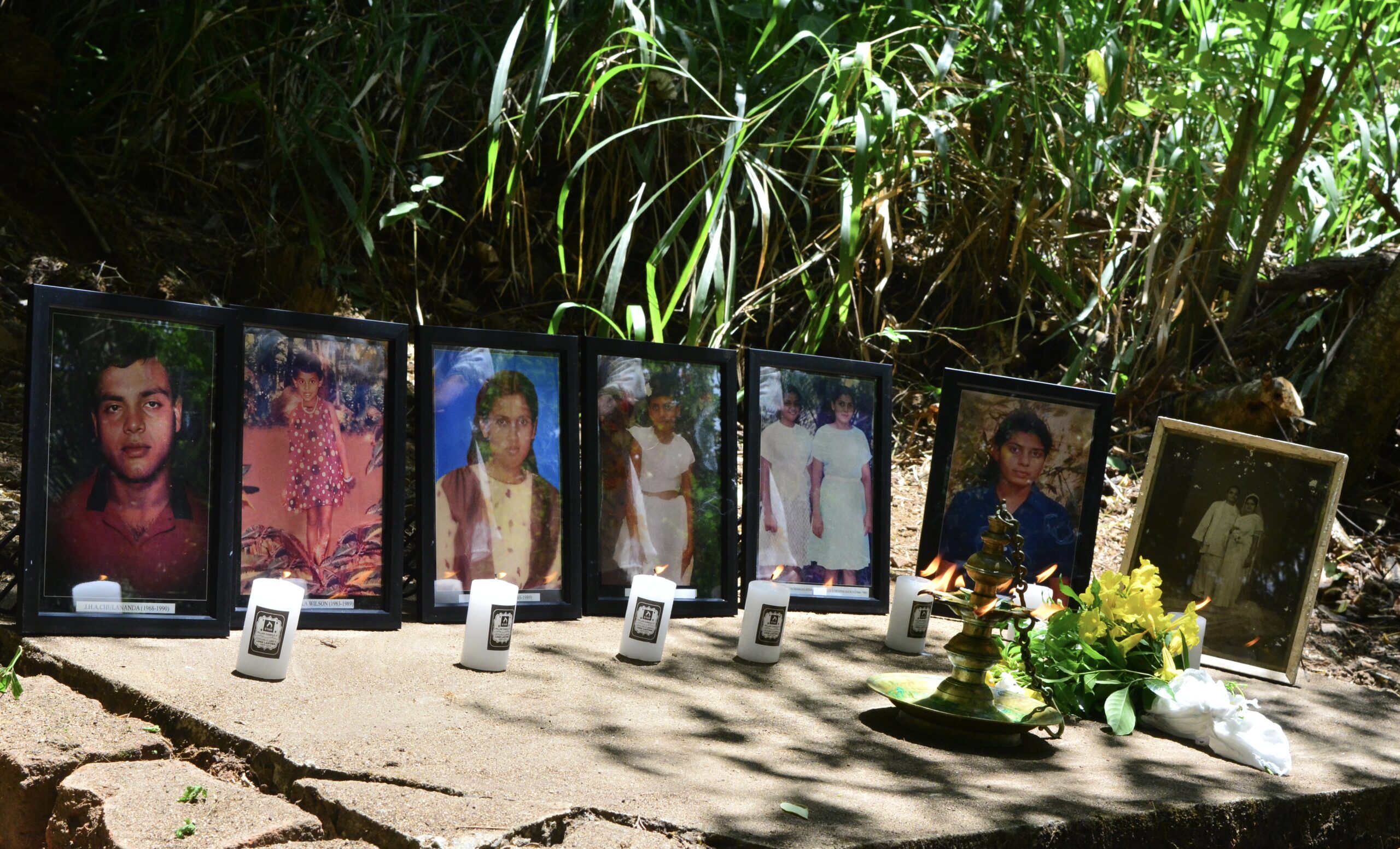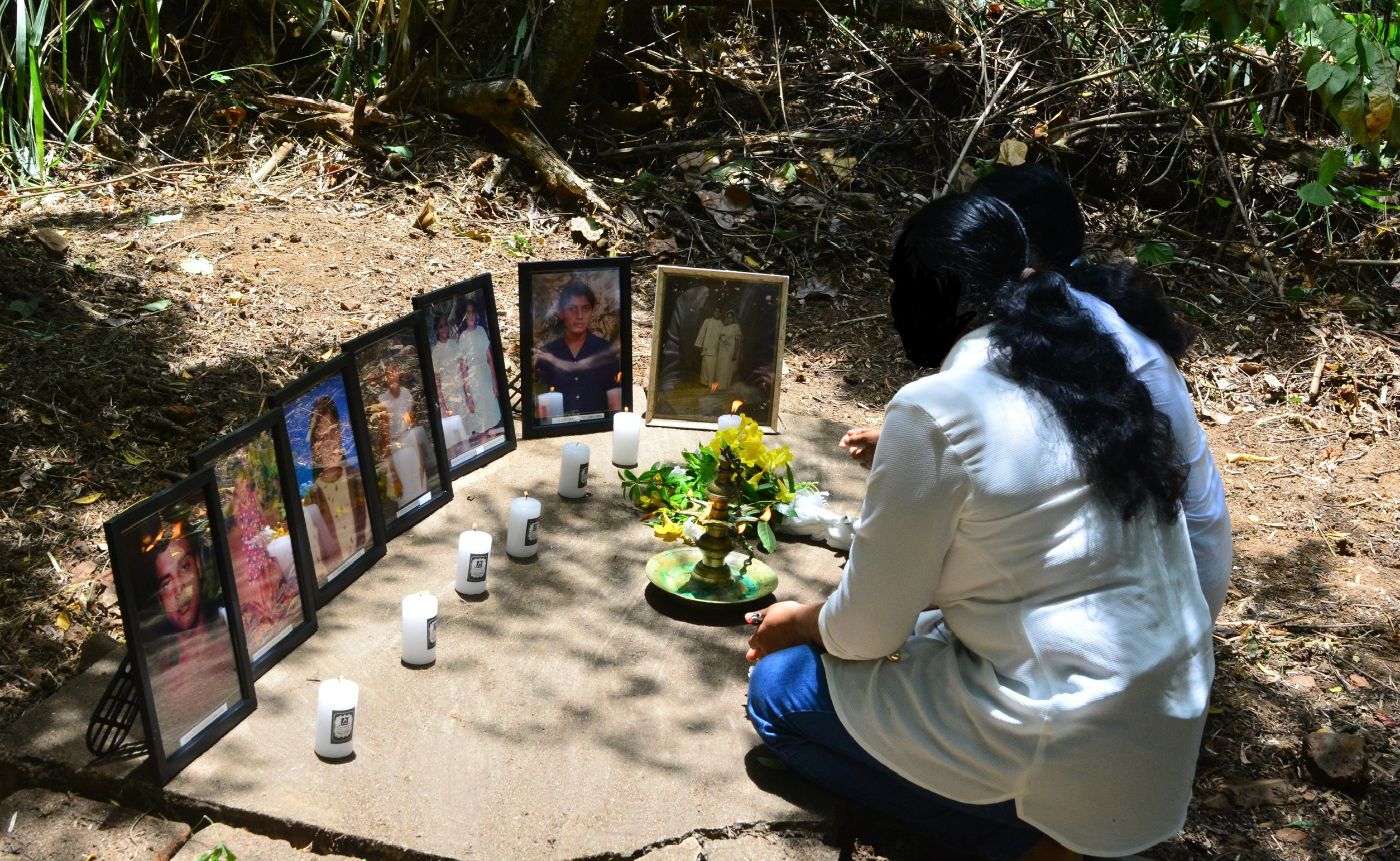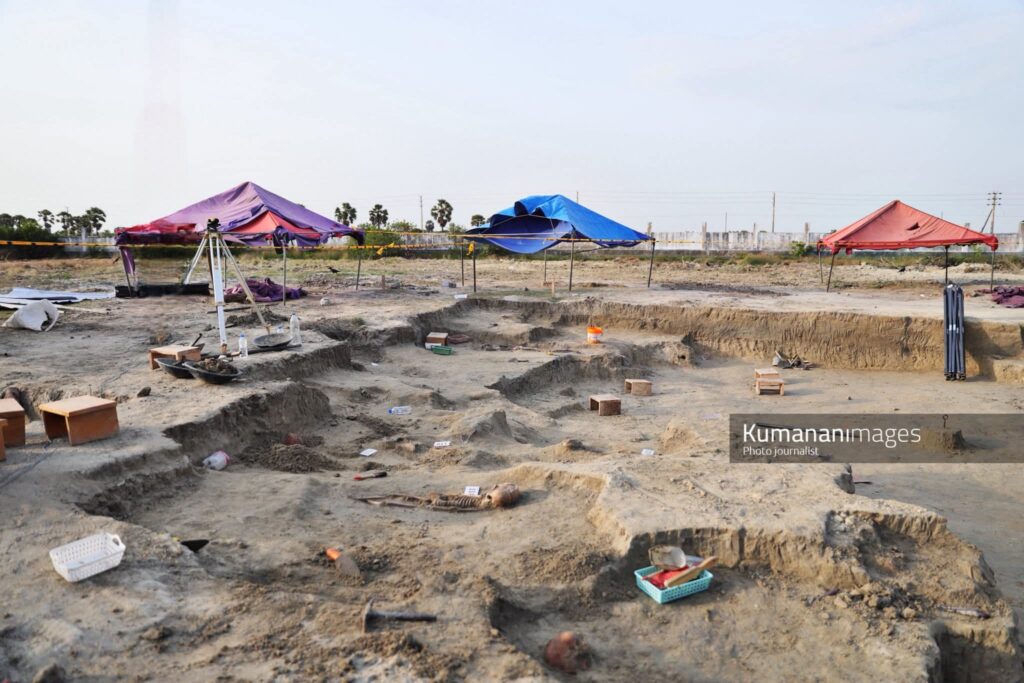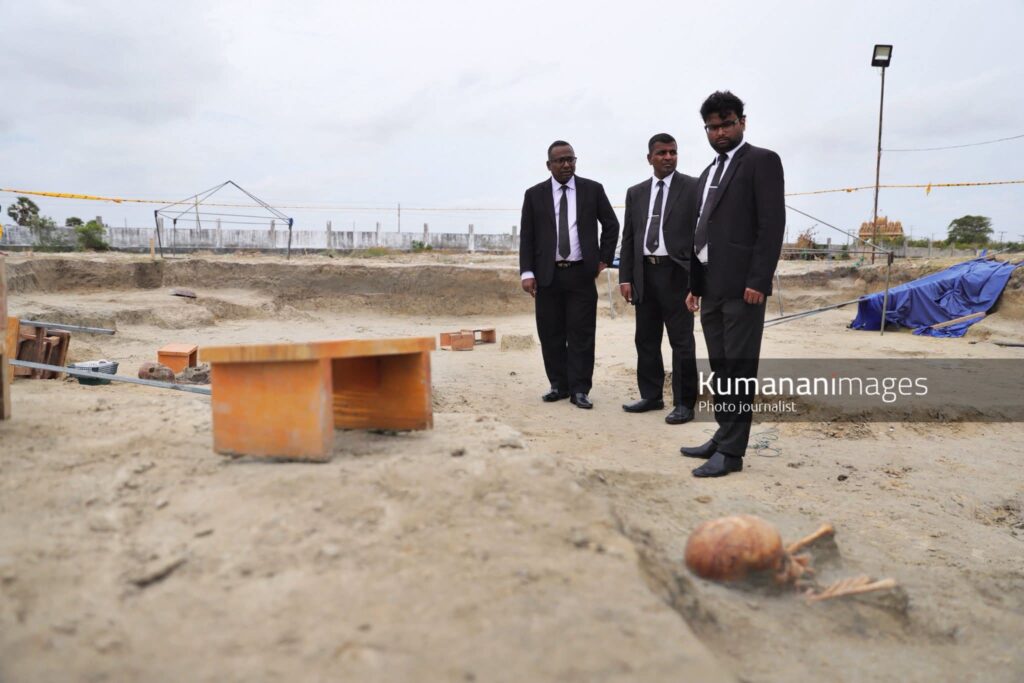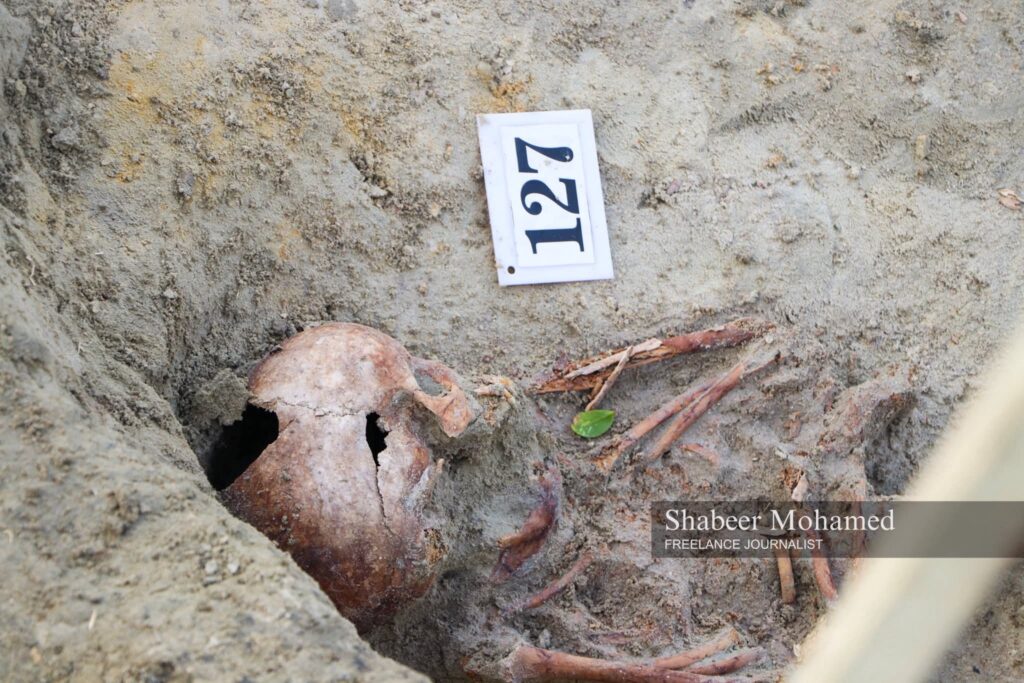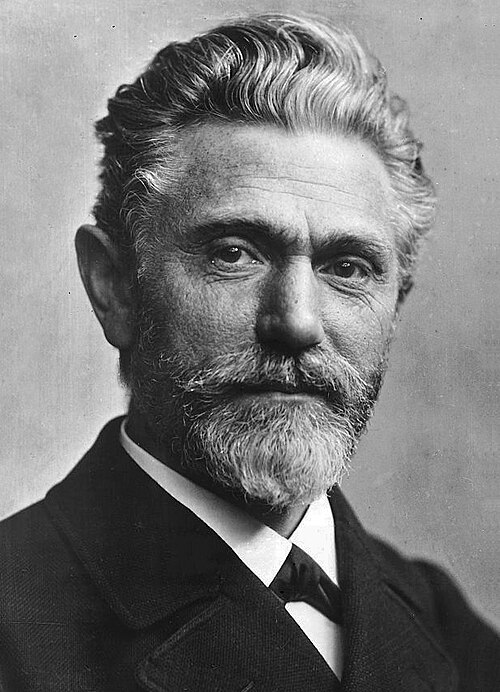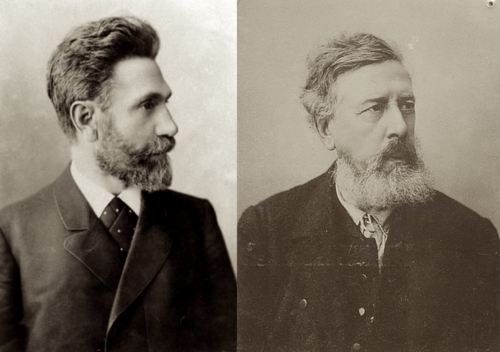‘කොමියුනිස්ට්’ ව්රෝධී ඉන්දුනීසියානු මහා ජන සංහාරයෙන් 60 වසරක් – 1 කොටස
මිගාර මල්වත්ත විසිනි.
මෙම වසරේ ඔක්තෝබර් මාසයේදී, ඉන්දුනීසියානු කොමියුනිස්ට් පක්ෂ (PKI) සාමාජිකයින් සහ ආධරකරුවන් කේන්ද්ර කරගනිමින් 1965 දී කම්කරු පීඩිත මහජනතාවට එරෙහිව සිදු කරන ලද ජන සංහාරයට හැට වසරක් පිරුණි. දෙවන ලෝක යුද්ධයෙන් පසු ආසියාව, අප්රිකාව සහ ලතින් ඇමරිකානු කලාපයන් පුරා සැඩ සුළඟක් මෙන් හමා ගිය අධිරාජ්යවාදයට සහ දේශීය කොම්ප්රදෝරු ධනපති පන්තියට එරෙහි කම්කරු පීඩිත මහජනතාවගේ දැවැන්ත අරගලයන් අතරට, ඉන්දුනීසියානු කම්කරු පීඩිත මහජනතාව විසින් දියත් කරන ලද අරගලය ද ඇතුළත් විය. ප්රතිගාමී ස්ටැලින්වාදී නිලධාරීවාදයත්, 1950 ගණන්වල මුලදී මෙම ස්ටැලින්වාදී නිලධාරීවාදය රැක ගැනීම සඳහා අධිරාජ්යවාදයේ තවත් ඒජන්සියක් ලෙස මතු වූ පැබ්ලෝවාදයත් පිහිට කර ගනිමින්, අධිරාජ්යවාදය හා එහි සහායක දේශීය කොම්ප්රදෝරු ධනපති පංතිය විසින් කම්කරු පීඩිත මහජනතාවට අත්කර දුන් අතිදැවැන්ත පරාජයක් ලෙස මෙම සමූලඝාතනය හඳුනාදිය හැකිය. ස්ටැලින්වාදී ඉන්දුනීසියානු කොමියුනිස්ට් පක්ෂයේ සහයෙන් දේශීය ධනපති පන්තිය විසින් ඉන්දුනීසියානු ජාතික විමුක්ති අරගලය පාවා දීම, 1965 දී සිදු වූ ලේ වැකි කුමන්ත්රණය, ඒ තුළ එක්සත් ජනපද අධිරාජ්යවාදයේ මැදිහත් වීම, මෙම සමූලඝාතනය උදෙසා නැවත වරක් PKI නායකත්වය හා පැබ්ලෝවාදීන් විසින් සිදු කරන ලද පාවාදීම, මෙම ලේ වැකි සමූලඝාතනයෙන් පසු බලය ලබා ගත් සුහාර්තෝගේ හමුදා ඒකාධිපතිත්වය යටතේ 1998 දක්වා වූ දැඩි මර්දනකාරී පාලනය හා 1997 ආසියානු මූල්ය අර්බුදයේ ප්රතිඵලයක් ලෙස කැරලිකාර මහජනතාව විසින් සුහාර්තෝ පලවා හැරීම දක්වාත් ඉන් පසු ප්රතිසංස්කරණ යුගය (Reformasi) ලෙස ධනපති ක්රමය යළි ස්ථාපිත වීම දක්වාත් ඓතිහාසික වාර්ථාවක් මෙම ලිපි මාලාවට අඩංගු වේ. මෙම ඓතිහාසික වාර්තාව සලකා බැලෙන්නේ විශේෂයෙන් මෙම කාල පරිච්ඡේදය තුල විජිත හා ධනපති සංවර්ධනයේ පසුගාමී රටවල ජාතික ධනේශ්වරයේ හා සුලු ධනපති පන්තියේ නායකත්වයන් විසින් කම්කරු පීඩිත අරගල ග්රහනයට ගැනිම හා ඊට බැඳි පැබ්ලෝවාදයේ අවස්ථාවාදී ක්රියාකලාපය විග්රහ කර ගැනීමේ පසුබිමක් වශයෙනි. ඒ සමගම ඉන්දුනීසියාවේ කම්කරු, ගොවි හා ශිෂ්යයින් ඇතුලු පීඩිත මධ්යම පන්තිය දේශපාලනික අවමංගතභාවයේ හෙලමින් කම්කරු පන්තියේ ස්වාධීන් විප්ලවවාදී ජාත්යන්තරවාදී වැඩ පිළිවෙළට හතුරුව කටයුතු කරන වත්මන් ජාතිකවාදී ධනපති ව්යාපාර හා සුළු ධනපති ව්යාජ-වාම සංවිධානවල ක්රියාකලාපය සලකා බලමින්, මෙම සියලු පාවාදීම්වලට එරෙහිව විප්ලවවාදී ඉදිරිදර්ශනයක් සහිතව සම්ප්රදායික ට්රොට්ස්කිවාදයේ ධජය යටතේ හතරවන ජාත්යන්තරයේ ජාත්යන්තර කමිටුව(හජජාක) විසින් සිදු කරන ලද අරගලය සාකච්ඡා කිරිම සහ ඉන්දුනීසියාවේ එහි ශාඛාවක් පිහිටුවීමේ අවශ්යතාව මතු කිරීම මෙම ලිපි මාලාවේ අරමුණයි.
~~
ඇමරිකානු CIA සංවිධානය මැදිහත් වීමෙන් සිදු කළ හමුදා කුමන්ත්රණයක් හරහා ඉන්දුනීසියානු කොමියුනිස්ට් පක්ෂ (PKI) සාමාජිකත්වය හා සහායකයින් ඉලක්ක කරගනිමින් 1965 ඔක්තෝම්බරයේ සිට සය මසකට වැඩි කලක් ක්රියාත්මක කෙරුණු මහා ජන සංහාරයට හැට වසරක් පිරී තිබේ. මෙම සංහාරය ‘කොමියුනිස්ට්’ විරෝධී යන නාමයෙන් සිදු කරන ලද නමුත්, සැබැවින්ම එය ස්ටැලින්වාදී PKI නායකත්වය විසින් පාවාදුන් කම්කරු පන්තියට සහ ගොවි ජනතාවට එරෙහි අධිරාජ්යවාදී ප්රහාරයක් විය. මෙම සංහාරයෙන් අවම වශයෙන් පුද්ගලයින් 500,000 ත් 1,000,000 ත් අතර සංඛ්යාවක් ඝාතනය කරන ලද බවට ගණන් බලා ඇත. තවත් වාර්තා මෙම ගණන මිලියන තුන දක්වා ඉහල දමයි. පශ්චාත් දෙවන ලෝක යුද කාල පරිච්ඡේදයේ, අධිරාජ්යවාදයට සහ දේශීය කොම්ප්රදෝරු ධනපති පන්තියට එරෙහිව ආසියාව, අප්රිකාව හා ලතින් ඇමරිකාව පුරා හමා ගිය කම්කරු පීඩිත මහජනතාවගේ දැවැන්ත විප්ලවවාදී අරගලයන් අතරට ඉන්දුනීසියානු කම්කරු පීඩිත මහජනතාවගේ අරගලය ද ඇතුළත්ය. ප්රතිගාමී ස්ටැලින්වාදී නිලධාරීවාදය සහ 1950 ගණන්වල මැද භාගයේ දී මෙම ප්රතිගාමී ස්ටැලින්වාදය ආරක්ෂා කර ගැනීම සඳහා අධිරාජ්යවාදයේ තවත් ඒජන්සියක් ලෙස මතුවූ පැබ්ලෝවාදය විසින් මෙම විප්ලවවාදී ව්යාපාරය පාවා දීමෙන්, අධිරාජ්යවාදය හා එහි සහයක දේශීය කොම්ප්රදෝරු ධනපති පන්තිය විසින් කම්කරු පීඩිත මහජනතාවට අත්කර දුන් අති දැවැන්ත පරාජයක් ලෙස මෙම සමූලඝාතනය හඳුන්වාදිය හැකිය.
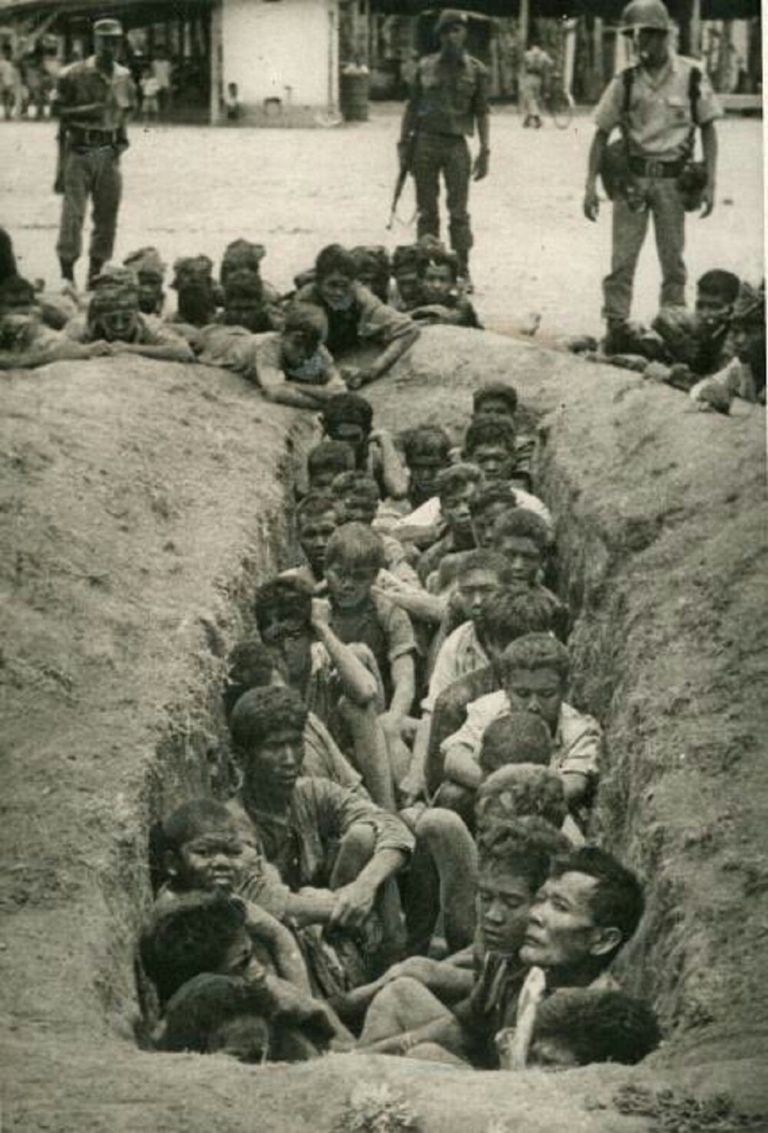
ඓතිහාසික පසුබිම
බුරුමයට ආසන්නව, අද දින ඉන්දියන් සාගරයේ පිහිටි සුමාත්රා දූපතේ සිට, ඕස්ට්රේලියාවට ආසන්න පැසිෆික් සාගරයේ පිහිටි බටහිර පැපුවා දක්වා සැතපුම් 3200 ක් පමණ දක්වා වූ දුරක් පුරා මෙම දූපත් සමූහය විහිද යන සේ පිහිටා සිටී. 1880 න් පසු මෙම භූගෝලීය කලාපය සඳහා “ඉන්දුනීසියාව” යන යෙදුම භාවිතා කරන ලදී. ඉන්දුනීසියානු දූපත් ප්රමාණය ගණනින් 17,000 ඉක්මවන අතර, ඉන් ජනාවාසව පවතින්නේ දූපත් 6,000 පමණ ප්රමාණයකි. ඉස්ලාම් ධර්මය හැරෙන්නට වෙනත් කිසිදු සංස්කෘතික සාම්යතාවයක් නොමැති මෙම දූපත් සමූහය එකට බැද තබනු ලැබුවේ වසර 350 පමණ වූ ලන්දේසි යටත් විජිත පාලනය විසිනි.
ලන්දේසි යටත් විජිතවල අධිරාජ්යවාදී කොල්ලකෑම
ලන්දේසි යටත් විජිත අධිරාජ්යවාදීන් විසින් වසර 350 ක් තිස්සේ ඉන්දුනීසියාව අනුකම්පා විරහිතව කොල්ලකෑ අතර, ස්වභාවික සම්පත් කොල්ලකෑම, විශාල කෘෂිකාර්මික වතු ස්ථාපිත කිරීම සහ එහි ජනතාව අනුකම්පා විරහිතව සූරා කෑම සිදු කළහ. ලන්දේසි නැගෙනහිර ඉන්දීය කොදෙව්වල යටත් විජිත යුද්ධ ඉන්දුනීසියානු ජනගහනයට දැඩි හානියක් සිදු කළ අතර, සෘජු යුද්ධ හානි, සාගතය සහ රෝග හේතුවෙන් මිලියන 3 සිට 4 දක්වා මරණ සිදු විය.
19 වන සියවස ආරම්භයේදී, නැගී එන බ්රිතාන්ය ධනේශ්වර අධිරාජ්යවාදය මෙම කලාපය කෙරෙහි ආධිපත්යය සඳහා ලන්දේසීන්ට වැඩි වැඩියෙන් අභියෝග කළේය. 1800 දී ලන්දේසි නැගෙනහිර ඉන්දීය සමාගම බිඳ වැටුණු අතර 1811 දී බ්රිතාන්යයන් විසින් මෙම කලාපය අත්පත් කර ගත්හ. නමුත් 1814 ඇංග්ලෝ-ලන්දේසි ගිවිසුමට අනුව 1816 දී නැවත ලන්දේසින්ට මෙම කලාපය බාර දෙන ලද අතර, 1824 ලන්ඩන් ගිවිසුම මගින් මෙම යටත් විජිත බලවතුන් දෙදෙනා විසින් කලාපය කොටස් දෙකකට බෙදා ගත්හ: බ්රිතාන්යයන් මැලේ අර්ධද්වීපයේ පාලනය අත්පත් කරගත් අතර ලන්දේසීන් ඉන්දුනීසියානු දූපත් සමූහය පාලනය කරන ලදී.
ලන්දේසීන් විසින් 1830 න් පසු ජාවාහි බලහත්කාර වගා කිරීමේ සහ ගිවිසුම්ගත ශ්රම ක්රමයක් හඳුන්වා දෙන ලදී. මෙම ක්රමය මගින් ලන්දේසීන් සහ ඔවුන්ගේ ඉන්දුනීසියානු සහචරයින් අතිවිශාල ධනයක් උපයන ලදී. මෙම වගා ක්රමය ගොවීන් ඔවුන්ගේ ඉඩම්වලට බැඳ දමා තිබුණි. 1870 න් පසු එළඹි වඩාත් ලිබරල් කාල පරිච්ඡේදයේ දී මෙම ක්රමය අහෝසි කරන ලදී.
1901 දී ලන්දේසීන් “ආචාර ධර්ම ප්රතිපත්තිය” ලෙස හැඳින්වූ ප්රතිපත්තියක් අනුගමනය කළ අතර, එයට දේශීය අධ්යාපනය සඳහා තරමක් වැඩි මුදලක් වෙන් කළහ. ලන්දේසි අධිරාජ්යවාදීන්ට මෙම ලිබරල් ප්රතිසංස්කරණ හදුන්වා දීමට සිදු වූයේ ධනපති ක්රමයේ සීඝ්ර වර්ධනයත් සමඟම, එහි පැවැත්ම සඳහා ධනපති පන්තියට වඩාත් ලිබරල්වාදී ප්රතිසංස්කරණ අනුගමනය කිරීමට සිදු වීමේ ප්රතිඵලයක් ලෙසිනි.
“ආචාර ධර්ම ප්රතිපත්තිය” පුළුල් අධ්යාපන අවස්ථා ලබා දුන්නේ නැත. කෙසේ වෙතත්, එය ස්වදේශික ඉන්දුනීසියානු ප්රභූ පැලැන්තියේ දරුවන්ට ලන්දේසි අධ්යාපනයක් ලබා දුන්නේය. බටහිර අධ්යාපනය නිදහස සහ ප්රජාතන්ත්රවාදය පිළිබඳ බටහිර දේශපාලන අදහස් ගෙන ආවේය. 1920 සහ 30 ගණන්වලදී, මෙම කුඩා ප්රභූ පැලැන්තිය විසින් නැගී එන යටත් විජිත විරෝධී සහ ජාතික චින්තනයක් ප්රකාශ කිරීමට පටන් ගත්තේය.
1918 දී, වසර දෙකකට පෙර පිහිටුවන ලද පූර්ව-පාර්ලිමේන්තුවක් වන වොක්ස්රාඩ් (මහජන කවුන්සිලය), පළමු වරට රැස්විය. එය සාමාජිකයින් 39 දෙනෙකුගෙන් සමන්විත වූ අතර, ඉන් 15 දෙනෙකු ස්වදේශික ඉන්දුනීසියානුවන් විය. මෙම වසරේ දී, අනාගතයේ යම් නිශ්චිත අවස්ථාවක දී ඉන්දුනීසියානුවන්ට ස්වයං පාලනයක් ලබා දෙන බවට ලන්දේසි රජය එකඟ වූ නමුත්, පසු වසරවලදී මෙම අරමුණ ඉටු කර ගැනීමට කිසිවක් කළේ නැත.
ජාතිකවාදයේ නැගීම හා ඉන්දුනීසියානු කොමියුනිස්ට් පක්ෂය පිහිටුවීම
පළමු ලෝක යුද්ධය පුපුරා යාමෙන් (1914-1918) සනාථ වූයේ, ලෝක ආර්ථික දේශපාලන ක්රමයක් ලෙස ධනපති ක්රමය සිය ඓතිහාසික වලංගුතාවය සිඳ ගත් බවයි. එහෙයින්, මෙම ප්රතිගාමී අධිරාජ්යවාදී ධනපති ක්රමයට එරෙහිව, 20 වන සියවසේ මුල් භාගයේ විජිත හා අර්ධ-විජිත රාජ්ය තුළ පැන නැගි ජාතිකවාදය මෙම නව ලෝක තත්ත්වයේ නිෂ්පාදනයක් වූ අතර බටහිර යටත් විජිතවාදයේ යටත්වැසියන් ලෙස පැවති අප්රිකාවේ සහ ආසියාවේ බොහෝ ප්රදේශවලට බලපාන පුළුල් නොසන්සුන්තාවයේ ප්රවාහයන්ගේ කොටසක් විය.
මෙම කාල පරිච්ඡේදය තුළ පළමු ඉන්දුනීසියානු දේශපාලන පක්ෂ මතුවීමට පටන් ගත්තේය. 1908 ඔක්තෝබර් මාසයේදී, පළමු ජාතිකවාදී ව්යාපාරය වන බුඩි උටෝමෝ පිහිටුවන ලදී. “ඉන්ඩිෂ් පාර්ටිජ්” පක්ෂය 1912 දී පිහිටුවන ලදී. එම වසරේම, සැප්තැම්බර් 10 වන දින, සරේකට් ඉස්ලාම් පළමු ජාතිකවාදී මහජන ව්යාපාරය පිහිටුවන ලදී. 1912 දෙසැම්බර් වන විට සරේකට් ඉස්ලාම් හි සාමාජිකයින් 93,000 ක් සිටියහ. එය ලන්දේසි පාලනයට එරෙහිව ඉස්ලාමයේ ධජය භාවිතා කරමින් ඉන්දුනීසියානුවන් එකට ගෙන ආවේය.
PKI හි පුරෝගාමී ව්යාපාරය සහ නිදහස් අරගලය
1914 දී ඉන්දීය සමාජ ප්රජාතන්ත්රවාදී සංගමය (ලන්දේසි: Indische Sociaal-Democratische Vereeniging – ISDV -Indies Social Democratic Association) ලන්දේසි සමාජවාදී හෙන්ක් ස්නීව්ලියට් සහ තවත් ඉන්දීය සමාජවාදියෙකු විසින් ආරම්භ කරන ලදී. ISDV හි යටත් විජිත පාලනයට විරුද්ධ වීමට ක්රම සොයන උගත් ඉන්දුනීසියානුවන්ට ලන්දේසි සාමාජිකයින් විසින් කොමියුනිස්ට් අදහස් හඳුන්වා දුන්හ. 1914 දී පටන්, ඉන්දුනීසියානු පීඩිත ජනතාවගේ හොඳම නියෝජිතයින් මාක්ස්වාදය වෙත හැරුණහ.
ISDV විසින් 1915 ඔක්තෝබර් මාසයේදී Het Vrije Woord (නිදහස් වචනය) නමින් ලන්දේසි භාෂා ප්රකාශනයක් ආරම්භ කළේය. ISDV පිහිටුවන විට එය ස්වාධීනත්වයක් ඉල්ලා සිටියේ නැත. නමුත්, එය ඉක්මනින් රැඩිකල් ධනවාදී විරෝධී දිශාවක් ගත්තේය. ISDV විසින් 1917 වසරේ දී එහි පළමු ඉන්දුනීසියානු භාෂා ප්රකාශනය වන Soeara Merdeka (නිදහසේ හඬ) ආරම්භ කළේය.
1917 රුසියානු විප්ලවයෙන් පසුව, ISDV හි රැඩිකල්වාදයට ඉන්දුනීසියානු ජනගහනයෙන් මෙන්ම ලන්දේසි සොල්දාදුවන්ගෙන් සහ විශේෂයෙන් නාවිකයින්ගෙන් ප්රමාණවත් සහයෝගයක් ලැබුණු අතර ලන්දේසි බලධාරීන් කලබල විය. එබැවින් 1918 දී ස්නීව්ලියට්ට ලන්දේසි නැගෙනහිර ඉන්දීය කොදෙව්වෙන් පිටව යාමට සිදු විය. ලන්දේසි යටත් විජිත බලධාරීන් විසින් ISDV මර්දනය කිරීම ආරම්භ කරන ලදී.
ඒ සමඟම, ISDV සහ කොමියුනිස්ට් හිතවතුන් “ඇතුළත අවහිර කිරීම” උපාය මාර්ගයක් ලෙස හැඳින්වෙන උපක්රමයකින් නැගෙනහිර ඉන්දීය කොදෙව්හි අනෙකුත් දේශපාලන කණ්ඩායම්වලට රිංගා ගැනීමට පටන් ගත්හ. වඩාත්ම පැහැදිලි බලපෑම වූයේ සරේකට් ඉස්ලාම් වෙත සිදු කරන ලද ඇතුළු වීමයි. සෙමවුන් සහ ඩාර්සෝනෝ ඇතුළු බොහෝ සාමාජිකයින්ගේ රැඩිකල් වාමාංශික අදහස් මගින් මෙම ඉස්ලාමීය ජාතිකවාදී සංවිධානය සාර්ථක බලපෑමට ලක් විය. එහි ප්රතිඵලයක් ලෙස, කොමියුනිස්ට්වාදී සංකල්පයන් ISDV නියෝජිතයන් විසින් ඉන්දුනීසියාවේ විශාලතම ඉස්ලාමීය සංවිධානය තුළ සාර්ථකව රෝපණය කරන ලදී.
1920 මැයි 23 වන දින සෙමරන්ග් හි පැවති සම්මේලනයේදී, ISDV, Perserikatan Komunis di Hindia (PKH; ඉන්දීය කොමියුනිස්ට් සංගමය) යන නම ලබා ගත්තේය. සෙමවුන් පක්ෂ සභාපතිවරයා වූ අතර ඩාර්සෝනෝ උප සභාපති විය. කොමියුනිස්ට් ජාත්යන්තරයේ (කොමින්ටර්න්) කොටසක් වූ පළමු ආසියානු කොමියුනිස්ට් පක්ෂය PKH වූ අතර, 1921 දී කොමින්ටර්න්හි 2 වන ලෝක සම්මේලනයේදී ස්නීව්ලියට් පක්ෂය නියෝජනය කළේය.
1924 වසරේ දී පක්ෂයේ නම පාර්ටයි කොමුනිස් ඉන්දුනීසියාව (PKI, ඉන්දුනීසියානු කොමියුනිස්ට් පක්ෂය) ලෙස වෙනස් කරන ලදී.
1926-27 කැරැල්ල සහ එහි මර්දනය
1925 මැයි මාසයේ පැවති පූර්ණ සැසියකදී, කොමින්ටර්න් විධායක කමිටුව, සිය ප්රතිගාමී පන්ති සම්මුතිවාදී ප්රතිපත්තිය මත පදනම් වෙමින්, ඉන්දුනීසියානු කොමියුනිස්ට්වාදීන්ට කොමියුනිස්ට් නොවන ජාතිකවාදී සංවිධාන සමඟ අධිරාජ්ය විරෝධී සන්ධානයක් පිහිටුවීමට නියෝග කළේය. PKI හි අලිමින් සහ මුසෝගේ නායකත්වයෙන් යුත් ප්රගතිශීලී කොටස් ලන්දේසි යටත් විජිත රජය පෙරලා දැමීම සඳහා විප්ලවයක් ඉල්ලා සිටියහ.
සැලසුම් කළ විප්ලවය බටහිර සුමාත්රාවෙහි පඩාං නගරයෙන් ආරම්භ වීමට නියමිත විය. නමුත් 1926 ආරම්භයේදී රජයේ ආරක්ෂක අංශ විසින් සිදු කරන ලද මර්දනය හේතුවෙන් PKI සාමාජිකයින් අත්අඩංගුවට ගැනීමට හේතු විය. 1926 නොවැම්බර් 12 වන දින බටේවියාවේ (දැන් ජකර්තා) සීමිත කැරැල්ලක් ආරම්භ විය; ඒ හා සමාන කැරලි පඩෑං, බැන්ටම් සහ සුරබයා හි සිදු විය.
අසාර්ථක වූ විප්ලවයේ ප්රතිඵලයක් ලෙස, පුද්ගලයින් 13,000 ක් අත්අඩංගුවට ගෙන, 4,500 ක් සිරගත කරන ලද අතර, 823 ක් බටහිර නිව්ගිනියාවේ ඩිගුල් කලාපයේ බොවන්-ඩිගොයෙල් කඳවුරට පිටුවහල් කරන ලදී. 1927 දී ලන්දේසි නැගෙනහිර ඉන්දීය කොදෙව් රජය විසින් පක්ෂය තහනම් කරන ලදී.
සුකර්නෝ සහ ජාතිකවාදී ව්යාපාරය
කොමියුනිස්ට් කැරැල්ලේ පරාජය සහ සරේකට් ඉස්ලාමයේ පරිහානිය නව ජාතිකවාදී සංවිධානයක් සඳහා මාවත විවර කළ අතර, 1926 දී බන්ඩුං හි “සාමාන්ය අධ්යයන සමාජයක්” ආරම්භ කරන ලදී. එහි ලේකම් ලෙස පත්වූයේ ,වංශාධිපති පවුලක ජාවා පාසල් ගුරුවරයෙකුගේ පුතෙකු වූ සුකර්නෝ ය. ඔහු තරුණ ගෘහ නිර්මාණ උපාධිධාරියෙකු වූ අතර, උගත් සුළු ධනේශ්වර ස්ථරයට අයත් විය. ඔහු ඉන්දුනීසියාවේ නව නාගරික ප්රභූ පැලැන්තිය මත පදනම් වෙමින් ජාතිකවාදී දෘෂ්ටියක් සකස් කිරීමට පටන් ගත්තේය.
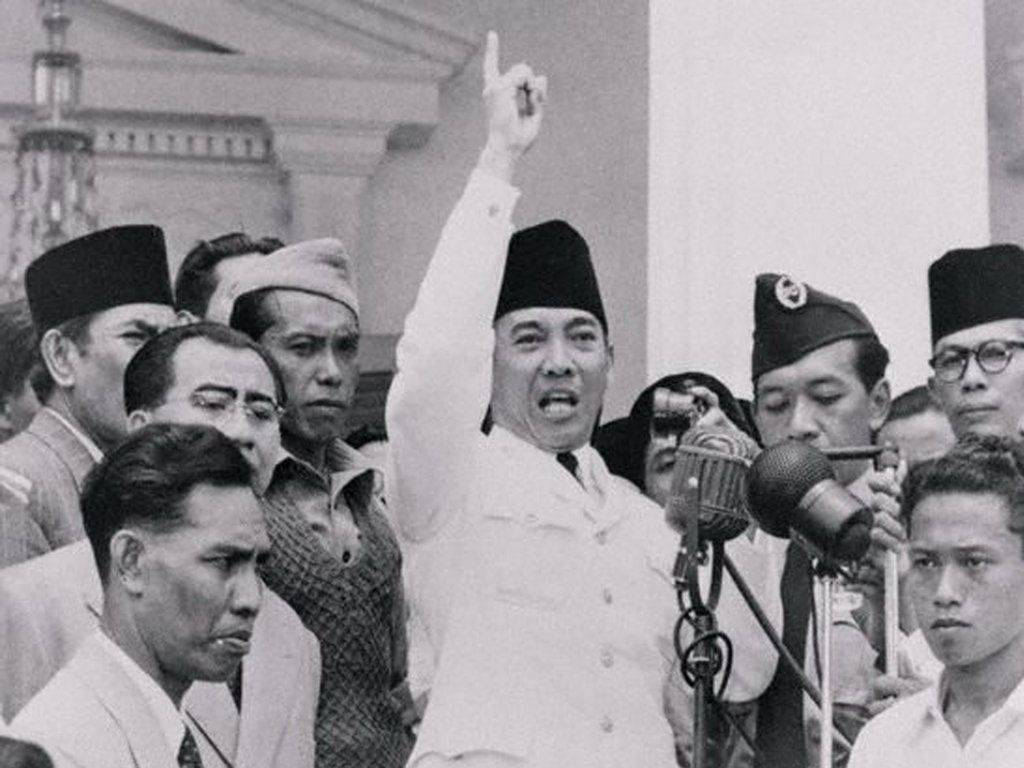
ඉන්දුනීසියාවේ ජාතිකවාදය සැලකිලිමත් වූයේ ලන්දේසි පාලනයට එරෙහි ප්රතිරෝධය ගැන පමණක් නොව, දූපත් සමූහයේ වාර්ගික විවිධත්වය වැළඳ ගනිමින්, සාම්ප්රදායික අධිකාරිය ප්රතිව්යුහගත කිරීම සහ නවීන රාජ්යයක් ලෙස ඉන්දුනීසියාව නිර්මාණය කිරීමට හැකි වන පරිදි ජාතිකත්වය පිළිබඳ නව සංකල්ප ගොඩ නැගීම කෙරෙහිද අවධානය යොමු කළේය.
1920 පමණ වන විට “ඉන්දුනීසියාව” යන වචනය එහි නූතන භාවිතයට පැමිණියේය. ජනවාර්ගික හා භූගෝලීය ප්රදේශය වර්ගීකරණය කිරීම සඳහා 1850 දී ඉංග්රීසි ස්වභාව විද්යාඥයන් වූ ජෝර්ජ් වින්ඩ්සර් අර්ල් සහ ස්කොට්ලන්ත නාවිකයෙකු වූ ජේම්ස් රිචඩ්සන් ලෝගන් විසින් නිර්මාණය කරන ලද “ඉන්දුනීසියාව” යන යෙදුම ජාතිකවාදීන් විසින් ජනතාවගේ එකමුතුවක් පරිකල්පනය කිරීමේ වචනයක් ලෙස යොදා ගන්නා ලදී. මීට පෙර තරුණ සන්ධාන විසින් වෙනම බාලිනීස් ජාතියක්, ජාවා ජාතියක්, සුමාත්රා ජාතියක් සහ යනාදිය වශයෙන් කතා කර තිබුණි. දැන් ඔවුහු ‘ඉන්දුනීසියාව’ ලෙස තනි ජනතාවක් ගැන කතා කළහ.
නෙදර්ලන්තයේ අධ්යාපනය ලද ඉන්දුනීසියානු සිසුන් විසින් නැගෙනහිර ඉන්දීය කොදෙව් හි ලන්දේසි පාලනයට එරෙහිව, 1924 දී පර්හිම්පුනාන් ඉන්දුනීසියා (Perhimpunan Indonesia – ඉන්දුනීසියානු සංගමය) නෙදර්ලන්තයේ ලෙයිඩන් නගරයේ දී පිහිටුවන ලදී. එය රැඩිකල් ජාතිකවාදී චින්තනයේ මධ්යස්ථානයක් බවට පත් වූ අතර, 1920 ගණන්වල මැද භාගයේදී නෙදර්ලන්තයේ සිට ආපසු මව්බිමට පැමිණි සිසුන් ඊට සමාන අදහස් ඇති කණ්ඩායම් සමඟ එක් විය.
නව ජාතිකවාදයට එහි ප්රකාශනය සඳහා නව සංවිධානයක් අවශ්ය වූ අතර, 1927 ජූලි 4 වන දින පිහිටුවන ලද ඉන්දුනීසියානු ජාතිකවාදී සංගමය (Perserikatan Nasional Indonesia), පසුව 1928 මැයි මාසයේදී ඉන්දුනීසියානු ජාතිකවාදී පක්ෂය (Partai Nasional Indonesia; PNI) ලෙස නම් වෙනස් කරන ලද්දේ, සුකර්නෝගේ සභාපතිත්වය යටතේය. PNI ලන්දේසි නැගෙනහිර ඉන්දීය කොදෙව් රජය සමඟ සහයෝගයෙන් කටයුතු නොකිරීමේ අදහස සහ සම්පූර්ණ නිදහස සඳහා පෙනී සිටීම මත පදනම් විය. කෙසේ වෙතත්, PNI සඳහා මහජන සහයෝගයේ පදනමක් නිර්මාණය කිරීමට උත්සාහ කළ සුකර්නෝ වඩාත් මධ්යස්ථ නායකයින් සමඟ එක්ව කටයුතු කිරීමට ද යම් සාර්ථකත්වයක් ලබා ගත් අතර පක්ෂය තුළ පුළුල් ලෙස පදනම් වූ, තරමක් අස්ථිර වුවද, ජාතිකවාදී සංවිධාන සංගමයක් පිහිටුවීමට සමත් විය.
1928 ඔක්තෝබර් 28 වන දින, තරුණ සංවිධානවල නියෝජිතයින් ගණනාවක් ඓතිහාසික තරුණ ප්රතිඥාව (Sumpah Pemuda) නිකුත් කළ අතර, එමඟින් ඔවුන් එක් ඉන්දුනීසියානු මාතෘ භූමියක්, එක් ඉන්දුනීසියානු ජනතාවක් සහ එක් ඉන්දුනීසියානු භාෂාවක් පමණක් හඳුනා ගැනීමට දිවුරුම් දුන්හ. එය රටේ නිදහස් ව්යාපාරයේ සන්ධිස්ථානයක් ලෙස සැලකෙන අතර විවිධ අනන්යතා හරහා පොදු අනන්යතාවයක් සංකේතවත් කෙරෙන බවට සැලකුණි.
සුකර්නෝ සිරගත කිරීම
1929 න් පසු ගෝලීය අවපාතය ලන්දේසි නැගෙනහිර ඉන්දීය කොදෙව්වන්ට තියුණු ලෙස බලපෑවේය. රබර්, සීනි සහ අනෙකුත් නිවර්තන භාණ්ඩ සඳහා වන අපනයන මිල පහත වැටුණි. එය යටත් විජිත බලධාරීන්ගේ ආදායම් පහත වැටීමට හේතු වූ අතර, වතු ශ්රමය සහ ගොවී අපනයන භෝග මත යැපෙන ඉන්දුනීසියානුවන්ගේ ආර්ථික අර්බුදය ඉහළ ගියේය. එමගින් දූපත් සමූහය පුරා සමාජ පීඩාව තීව්ර කළ අතර අර්ථවත් ප්රතිසංස්කරණ අනුගමනය කිරීමේ ලන්දේසි කැමැත්ත සහ ධාරිතාව සීමා විය. ආර්ථික හැකිලීම සමාජ නොසන්සුන්තාව, වැඩ වර්ජන සහ සහන සඳහා ඉල්ලීම් තීව්ර විය. මෙම තත්වය මත ප්රමුඛ අධිරාජ්ය විරෝධී කථීකයෙකු ලෙස සුකර්නෝ පෙරට පැමිණියේය. දේශීය වශයෙන් ඇතිවී තිබෙන මෙම නොසන්සුන්තාව මැඩපැවැත්වීම සඳහා දැඩි පියවර (පොලිස් ක්රියාමාර්ග, අත්අඩංගුවට ගැනීම්, මාධ්ය සහ රැස්වීම් සීමා කිරීම්) ලන්දේසි පාලනය විසින් ගනු ලැබුණි.
ලන්දේසි පාලනය විසින් ජාතිකවාදී ව්යාපාරය මර්දනය කිරීම ආරම්භ කරන ලද අතර, එය බොහෝ අත්අඩංගුවට ගැනීම් වලට හේතු විය. 1929 දෙසැම්බර් 29 වන දින, ඉන්දුනීසියාවේ පළමු ජනාධිපති වූ සුකර්නෝ සහ PNI හි අනෙකුත් ප්රමුඛ නායකයින් ජාවාව පුරා සිදු කරන ලද වැටලීම් මාලාවක දී ලන්දේසි යටත් විජිත බලධාරීන් විසින් අත්අඩංගුවට ගනු ලැබුවේය. සුකර්නෝ අත්අඩංගුවට ගනු ලැබුවේ යොග්යාකාර්තාවට කරන ලද සංචාරයක දී ය. 1930 අගෝස්තු සිට දෙසැම්බර් දක්වා බන්ඩුං ලෑන්ඩ්රාඩ් උසාවියේ පැවති ඔහුගේ නඩු විභාගයේදී, සුකර්නෝ විසින් යටත් විජිතවාදය හා අධිරාජ්යවාදය ප්රහාරයට ලක් කරමින් “Indonesia Menggoegat” (ඉන්දුනීසියාව චෝදනා කරයි) නම් දිගු දේශපාලන කථාමාලාවක් පැවැත්වීය. 1930 දෙසැම්බර් මාසයේදී සුකර්නෝට වසර හතරක සිර දඬුවමක් නියම කරන ලද අතර, එය බන්ඩුං හි සුකමිස්කින් බන්ධනාගාරයේ ඉටු කරන ලදී. කෙසේ වෙතත්, ඔහුගේ කථාව මාධ්ය විසින් පුළුල් ලෙස ආවරණය කරන ලද අතර, නෙදර්ලන්තයේ සහ ලන්දේසි නැගෙනහිර ඉන්දීය කොදෙව් යන දෙකෙහිම ලිබරල් කොටස්වල ප්රබල පීඩනය හේතුවෙන්, සුකර්නෝ 1931 දෙසැම්බර් 31 වන දින කලින් නිදහස් කරන ලදී. මේ වන විට ඔහු ඉන්දුනීසියාව පුරා ප්රකටව දන්නා ජනප්රිය වීරයෙකු බවට පත්ව තිබුණි. කෙසේ වෙතත්, ඔහුගේ සිරගත කිරීම තුළදී, PNI යටත් විජිත බලධාරීන්ගේ මර්දනය සහ අභ්යන්තර මතභේද හේතුවෙන් බෙදී ගොස් තිබුණි.
මුල් PNI විසුරුවා හරින ලදී, එහි හිටපු සාමාජිකයින් විවිධ පක්ෂ දෙකක් පිහිටුවන ලදී. 1931 අප්රේල් මස අවසානයේදී, PNI හි හිටපු ප්රමුඛ චරිතයක් වූ සාර්ටෝනෝ, ඉන්දුනීසියානු පක්ෂය (Partindo) පිහිටුවන ලදී. එය PNI සාමාජිකත්වයෙන් බහුතරයක් ආකර්ෂණය කර ගත් අතර ලන්දේසීන්ගෙන් ඉන්දුනීසියානු නිදහස සඳහා උද්ඝෝෂනය කළ නමුත් PNI ට වඩා අඩු රැඩිකල් විය. තවත් කණ්ඩායම් ගණනාවක් එකතු වී නව සංවිධානයක් පිහිටුවා ගත් අතර එය නව PNI (PNI Baru) ලෙස හැඳින්වේ. නෙදර්ලන්තයේ අධ්යාපනයෙන් මෑතකදී ආපසු පැමිණි ජාතිකවාදීන් වූ මොහොමඩ් හට්ටා සහ සුතාන් ස්ජහ්රීර්ගේ නායකත්වයෙන් යුත් නව PNI පිහිටුවන ලද්දේ මහජන උද්ඝෝෂණ වෙනුවට දිගුකාලීන කේඩර් පදනම් වූ අරගලයක් සහ ඉන්දුනීසියානු ජනගහනයට නවීන අධ්යාපනය ලබා දීමේ උපාය මාර්ගය ප්රවර්ධනය කරමිනි.
1933 අගෝස්තු මාසයේදී සුකර්නෝ නැවතත් අත්අඩංගුවට ගෙන මුලින් ෆ්ලෝරස් දූපතේ එන්ඩේ වෙත පිටුවහල් කරන ලදී. පසුව 1938 දී ඔහු දකුණු සුමාත්රාවේ බෙන්ග්කුලු වෙත මාරු කරන ලදී. හට්ටා සහ ස්ජහ්රීර් ඇතුළු අනෙකුත් පක්ෂ නායකයින්ට එරෙහිව මර්දනකාරී ක්රියාමාර්ග අනුගමනය කරන ලද අතර ඔවුන් ද පිටුවහල් කරන ලදී. මෙසේ ජාතිකවාදී ව්යාපාරයේ රැඩිකල්වාදී ප්රවනතාව මර්ධනය කරන ලදී.
සහයෝගී ජාතිකවාදය සහ වොක්ස්රාඩ්
1930 ගණන්වල අගභාගයේදී ජාතිකවාදී නායකයින්ට ලන්දේසීන් සමඟ සහයෝගයෙන් කටයුතු කිරීමට බල කෙරුණු අතර, එය හැරෙන්නට මෙම පසුගාමී ධනපති පන්තියට පංති අවශ්යතාවය මත තෝරා ගත හැකි වෙනත් විකල්පයක් නොවීය. ජාතිකවාදී තර්ජන ක්ෂණිකව පෙනෙන තැන ලන්දේසීන් පාලනයන් දැඩි කළ අතර පරිපාලනය ස්ථාවර කිරීමට සේවය කළ ගතානුගතික දේශීය ධනපතින්ට සහයෝගය ලබා දුන්නේය. මේ සඳහා ලන්දේසින් යොදා ගනු ලැබුවේ වොක්ස්රාඩ් හෙවත් මහජන කවුන්සිලයයි. එය නීතිගත ක්රමය හරහා වර්ධක ප්රතිසංස්කරණ අපේක්ෂා කළ දේශපාලනික වශයෙන් ප්රභූන් (බොහෝ විට බටහිර අධ්යාපනය ලැබූ සහ යටත් විජිත පරිපාලන ජාලයන්හි ගිලී සිටි) පිරිසකගෙන් සැදුම් ලද්දකි.
1918 දී උපදේශක ව්යවස්ථාදායකයක් ලෙස නිර්මාණය කරන ලද වොක්ස්රාඩ් (මහජන කවුන්සිලය) වැනි උපදේශක ආයතන ද සංරක්ෂණය කර සමහර විට පුළුල් කළේය. 1930 ගණන්වල මුල් භාගය වන විට වොක්ස්රාඩ් “සහයෝගී ජාතිකවාදීන්ට” වර්ධක ප්රතිසංස්කරණ සඳහා හිමිකම් පෑමට සහ පරිපාලන තනතුරු, සිවිල් සේවා ප්රතිසංස්කරණ හෝ ජාතිකවාදී පාරිභාෂිතය සහ සංවිධාන සඳහා නීතිමය පිළිගැනීමක් ලබා ගත හැකි ප්රධාන නීති සංසදය බවට පත්ව තිබුණි.
1930 ගණන්වල මැද භාගයේදී බුඩි උටෝමෝ සහ අනෙකුත් ජාතිකවාදී කණ්ඩායම්වල සම්මිශ්රණයකින් ආරම්භ කරන ලද පරින්ද්ර (Parindra) සංවිධානය, සමුපකාර ජාතිකවාදයේ ප්රමුඛ ප්රකාශනය ලෙස මතු විය. සිවිල් අධ්යාපනය, සමාජ සුභසාධනය, වෙළඳ හා ආර්ථික වැඩිදියුණු කිරීම ආදී ප්රතිසංස්කරණවාදී වැඩසටහන් වටා ජාතිකවාදී ශක්තීන් එක්සත් කිරීමට උත්සාහ කළේය. මෙම පක්ෂය වොක්ස්රාඩ් හි සාමාජිකත්වය පිළිගතිතේය.
වොක්ස්රාඩ් කණ්ඩායමක් තුළ කථීකයෙකු සේ කටයුතු කළ මොහොමඩ් හුස්නි තම්රින්, සමූපකාර ජාතිකවාදී නායකයින්ට යටත් විජිත පාලනය තුළ එකවර වැඩ කළ හැකි ආකාරය සහ වඩාත් ප්රසිද්ධ ජාතිකවාදී න්යාය පත්ර ඉදිරිපත් කරන ලදී.
දෙවන ලෝක යුද්ධය සහ ජාතිකවාදී දේශපාලන සංසදය
දෙවන ලෝක යුද සංග්රාමය පුපුරා යාමත් සමගම, ජර්මනිය විසින් සිදුකළ ආක්රමණයෙන් 1940 දී නෙදර්ලන්තය අත්පත් කර ගැනීමෙන් පසු ලන්දේසි රජයේ ස්ථාවරත්වය වේගයෙන් බිඳ වැටුණි. අගනගර පාලනය දුර්වල විය. යටත් විජිත පරිපාලකයින් හිඟයන්ට, අවිනිශ්චිතතාවයට සහ අධිරාජ්ය පිළිවෙල ආරක්ෂා කළ නොහැකි බවට වූ වැඩෙන හැඟීමකට මුහුණ දුන්හ. මෙවැනි තත්ත්වයක් තුළ ඉන්දුනීසියානු “රැඩිකල්වාදී” ජාතිකවාදී නායකත්වයන්ගේ පවා සැබෑ දේශපාලනය හෙලිදරව් වන්නට විය. මන්ද 1937 දී Gerindo (ගෙරින්ඩෝ) නම් වඩාත් රැඩිකල් පක්ෂයක් පිහිටුවන ලද නමුත්, එය පවා ජාතික සමාජවාදයේ (නාසිවාදයේ) තර්ජනයට එරෙහිව නෙදර්ලන්තයට සහාය වීම නිදහස පිළිබඳ ප්රශ්නයට වඩා වැදගත් යැයි සැලකීය. මෙසේ බිද වැටෙන ලන්දේසි අධිරාජ්යය ආරක්ෂා කර ගැනීම මෙම ජාතිකවාදී නායකත්වයන්ගේ දේශපාලන අස්ථානය වී තිබුණි.
මහා ඉන්දුනීසියානු පක්ෂය (Parindra – පරින්ද්ර), ඉන්දුනීසියානු මහජන ව්යාපාරය (Gerindo – ගෙරින්ඩෝ), Paguyuban Pasundan (පගුයුබන් පසුන්දන්), ඉන්දුනීසියානු ඉස්ලාමීය සංගම් පක්ෂය (PSII), ඉන්දුනීසියානු ඉස්ලාමීය පක්ෂය, මිනහාස සංගමය, කතෝලික පක්ෂය, ඉන්දුනීසියාවේ අරාබි සංගමය ආදී පක්ෂ ඒකාබද්ධ වීමෙන් ඉන්දුනීසියානු දේශපාලන සම්මේලනය (GAPI) 1939 දී පිහිටුවන ලද අතර, ඔවුන්ගේ අරමුණ වූයේ වොක්ස්රාඩ් සහභාගී වී, බිද වැටෙන ලන්දේසි අධිරාජ්යයට මුක්කු සපයමින්, ඊට ප්රතිඋපකාර ලෙස ලන්දේසි අධිරාජ්යවාදීන්ගෙන් ලැබෙන වරප්රසාදයන්ගෙන් තම පංති අවශ්යතා තෘප්තිමත් කර ගැනීමයි.
මෙම සමුපකාර ජාතිකවාදීන්ට ඉල්ලීම් විධිමත්ව ඉදිරිපත් කළ හැකි නමුත් එය කළ හැකි වූයේ යටත් විජිතවාදී පාලන රාමුව තුළ පමණි. මහානගර තුළ රජය තීරණාත්මක ලෙස බලය රඳවා ගත්තේය. විශේෂයෙන් ඉදිරිපත් කළ ප්රතිසංස්කරණයන් අධිරාජ්යයේ පරමාධිපත්යයට තර්ජනයක් ලෙස විනිශ්චය කළ අවස්ථාවන්හිදී, එවැනි පෙත්සම් ප්රතික්ෂේප කෙරුනි.
ජපන් ආක්රමණය සහ සුකර්නෝගේ සහයෝගීතාවය
දෙවන ලෝක යුද්ධය තත්වය තවදුරටත් වෙනස් කළේය. 1942 ජනවාරි 10 වන දින ලන්දේසි නැගෙනහිර ඉන්දීය කොදෙව්හි ජපන් ආක්රමණය ආරම්භ වූ අතර, අධිරාජ්ය ජපන් හමුදාව මාස තුනකටත් අඩු කාලයකදී මුළු යටත් විජිතයම අත්පත් කර ගත්හ. මාර්තු 8 වන දින ලන්දේසීන් යටත් විය. මෙම පරාජය ලන්දේසි දේශපාලන ව්යුහයේ වැඩි කොටසක් බිඳ දැමූ අතර, ජාතිකවාදී සිරකරුවන් නිදහස් කිරීම හෝ සහයෝගී කිරීම සිදු කරමින් ජාතිකවාදී නායකයින්ට තියුණු තේරීමක් ඉදිරිපත් කළේය. එනම් නව අධිරාජ්ය බලයකට (ජපන්) විරුද්ධ වීම හෝ ඉන්දුනීසියානු ස්වයං පාලනය සඳහා ලීවරයක් ලෙස ජපන් අධිරාජ්යවාදය සමග උපායශීලීව සහයෝගයෙන් කටයුතු කිරීමයි.
සුකර්නෝ විසින් ජපන් අධිරාජ්යවාදීන් විමුක්තිදායකයින් විමේ හැකියාව පිළිගැනීම මත 1942–45 දී ජපන් අතරමැදියෙකු සහ ප්රචාරකයෙකු ලෙස ඔහුගේ පසුකාලීන භූමිකාව දිග හැරුණි. ජපන් අධිරාජ්යවාදයේ පැමිණීම ලන්දේසි පාලනය දුර්වල කළ හැකි බවත්, සහයෝගීතාවයෙන් අවසානයේ නිදහස ප්රකාශ කිරීම සඳහා සූදානම් වීමට ආයතනික හා සංවිධානාත්මක අවකාශය නිර්මාණය කළ හැකි බවත් සුකර්නෝ සහ අනෙකුත් නායකයින් තර්ක කළත්, සැබැවින්ම ඔවුන් සිදු කරන ලද්දේ, ලන්දේසි අධිරාජ්යවාදීන් වෙනුවට ජපන් අධිරාජ්යවාදීන්ට සහයෝගය දීමෙන්, නැවත වරක් ඉන්දුනීසියානු කම්කරු පීඩිත මහජනතාව වෙනත් අධිරාජ්යවාදී වියගසකට බැද දැමීමට සැලසුම් සකස් කිරීමයි.
ජපන් අධිරාජ්යවාදය සමග සුකර්නෝ විසින් ඇති කර ගනු ලැබූ සම්මුතිය සුකර්නෝ ඇතුළු ඉන්දුනීසියානු ධනපති පංතියේ පංති අවශ්යතා සමග ගැලපුනද, සැබැවින්ම ඉන්දුනීසියානු කම්කරු පීඩිත මහජනතාවට එමගින් අත්වූයේ මහා ව්යසනයකි.
ජපන් ආක්රමණයේ ලේවැකි ප්රතිඵල
ජපන් අධිරාජ්යවාදය විසින් ජාවා හි ආර්ථික සංවර්ධන සහ ආරක්ෂක ව්යාපෘති සඳහා ඉන්දුනීසියානු ජාතිකයන් මිලියන 4 ත් 10 ත් අතර සංඛ්යාවක් බලහත්කාර කම්කරුවන් (rōmusha – රෝමුෂා) ලෙස බඳවා ගත්හ. ඉන් 200,000 ත් 500,000 ත් අතර සංඛ්යාවක් ජාවා සිට පිටත දූපත් දක්වා සහ බුරුමය සහ සියම් (තායිලන්තය) දක්වා යවන ලදී. ජාවාවෙන් ඉවත් කරන ලද අයගෙන් 70,000 කට වඩා යුද්ධයෙන් දිවි ගලවා ගත්තේ නැත. ජපන් ආක්රමණය අතරතුර සාගතය සහ බලහත්කාර ශ්රමය හේතුවෙන් ලන්දේසි නැගෙනහිර ඉන්දීය කොදෙව්හි මිලියන හතරක පමණ ජනතාවක් මරණයට පත්විය. විශේෂයෙන්ම 1944-45 වසරවල ජාවාවේ සිදු වූ සාගතය මිලියන 2.4ක් පමණ මරණ වලට හේතු විය.
මෙමඟින් සුකර්නෝ විසින් මෙතෙක් කලක් පුනරුච්චාරනය කරන ලද අධිරාජ්ය විරෝධී සටන් පාඨයන් ඔහුගේ හුදු පන්ති අවශ්යතාවලම වාචාල ප්රකාශ පමණක් බව මෙහිදී ඔහු විසින්ම ඔප්පු කොට පෙන්වීය.
ජාතික ධනේශ්වරයේ බෙලහීනත්වය
මෙහිදී තවදුරටත් සනාථ වූයේ, පසුගාමී රටවල බෙලහීන ධනපති පන්තියට ඓතිහාසිකව තවදුරටත් ප්රගතිශීලී කාර්යභාරයක් නොමැති බවයි. මෙය ට්රොට්ස්කිවාදී නොනවතින විප්ලව න්යායෙන් තහවුරු කරන ලද සිද්ධාන්තයයි. යටත් විජිත සහ අර්ධ-යටත් විජිත රටවල දේශීය ධනපති පන්තිය, අධිරාජ්යවාදය සමගම බැඳී සිටින ආකාරයෙන් සහ අධිරාජ්යවාදී ප්රචණ්ඩත්වයට බියෙන්, ප්රජාතන්ත්රවාදී ජාතික විප්ලවය සම්පූර්ණ කිරීමට සහ භූමි ප්රශ්නය විසඳීමට අසමත්ය. අධිරාජ්යවාදයට එරෙහි අරගලය සැබැවින්ම දිනාගත හැක්කේ කම්කරු පංතියේ නායකත්වය යටතේ, කම්කරු සහ ගොවි සන්ධානයක් මත පදනම් වූ, සමාජවාදී විප්ලවයේ දෘෂ්ටිය සමගය.
එනම් අවසානයේ දී මෙම බෙලහීන ධනපති පන්තියට ඒ හෝ මේ අධිරාජ්යවාදී බලයක් සමග පෙල ගැසීම හැරෙන්නට වෙනත් කිසිදු විකල්පයක් නොමැති බව මෙමඟින් තවදුරටත් තහවුරු විය. 1942-45 ජපන් ආක්රමණය හා ඊට අනතුරුව 1965 ඇමරිකානු අධිරාජ්යවාදය විසින් සංවිධානය කරන ලද සුහර්තෝගේ හමුදා කුමන්ත්රණය තුළින් සිදු වූ සමූලඝාතනය, ජාතික ධනපති පන්තිය අතට ප්රජාතන්ත්රවාදී කර්තව්යයන් සාක්ෂාත් කිරීමේ කර්තව්යය රැගෙන යන මෙම සම්මුතිවාදී මාර්ගයේ අනිවාර්ය ප්රතිඵලය විය. ස්ටැලින්වාදී “අවධි දෙකේ න්යාය”, කම්කරු පන්තිය ධනපති පන්තියට යටත් කිරීම හරහා, කම්කරු පීඩිත මහජනතාවගේ ස්වාධීන අරගලය මර්දනය කරමින්, අධිරාජ්යවාදයට මෙම පරාජයන් සූදානම් කිරීමේ අවකාශ නිර්මාණය කළේය.
මතු සම්බන්ධයි…
ආශ්රිත ලිපි
- Lessons of the 1965 Indonesian Coup – Chapter One: The historical background, World Socialist Web Site <https://www.wsws.org/en/articles/2009/05/ind1-m16.html>
- Lessons of the 1965 Indonesian Coup – Chapter Two: Stalinists betray the mass movement, World Socialist Web Site <https://www.wsws.org/en/articles/2009/05/ind2-m16.html>
- Lessons of the 1965 Indonesian Coup – Chapter Three: 1965—Stalinism’s bloody legacy, World Socialist Web Site <https://www.wsws.org/en/articles/2009/05/ind3-m16.html>
- Indonesia – Colonialism, Revolution, Independence | Britannica <https://www.britannica.com/place/Indonesia/Toward-independence>
- Fifty years since the Indonesian coup, World Socialist Web Site <https://www.wsws.org/en/articles/2015/10/01/indo-o01.html>
- US orchestrated Suharto’s 1965-66 slaughter in Indonesia, World Socialist Web Site <https://www.wsws.org/en/articles/1999/07/indo1-j19.html>
‘කොමියුනිස්ට්’ ව්රෝධී ඉන්දුනීසියානු මහා ජන සංහාරයෙන් 60 වසරක් – 1 කොටස Read More »

